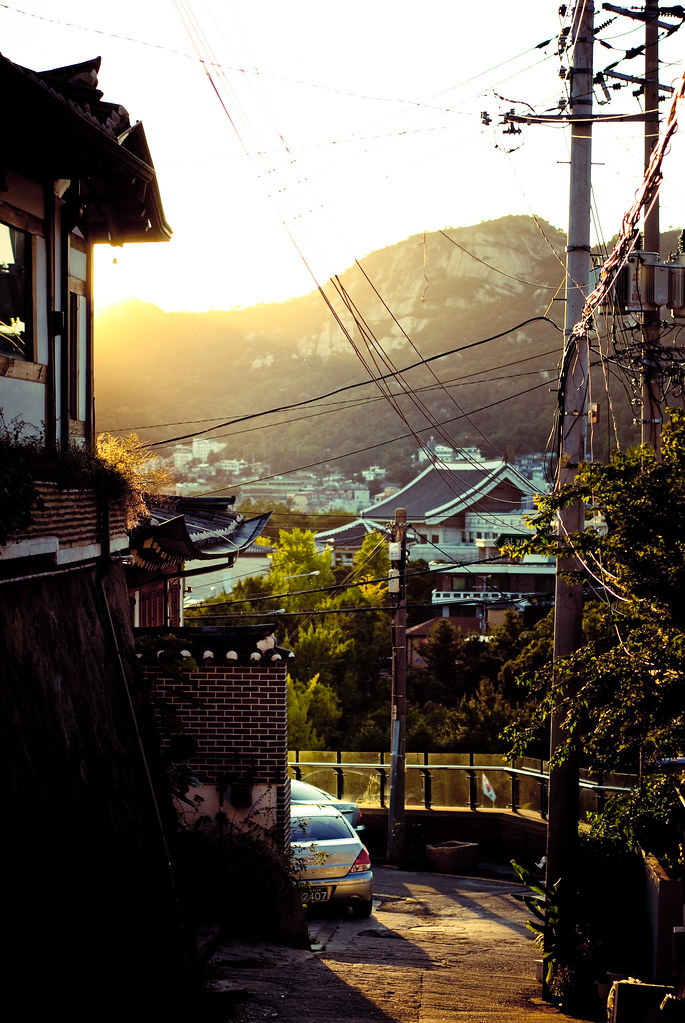
Bukchon Hanok Village, October 2009.
I guess I've been going through quite a few shots from the past months, lately. In October, my friend Joanne took me to Samcheong-dong, a lovely artsy neighborhood on a hill, filled with small art galleries and coffee shops (and home to Seoul's most important palace, Gyeongbokgung, and the National Folk Museum). Perched near the top is the Bukchon Hanok Village, one of a few remaining preserved areas of Korean traditional hanok housing in Seoul, instantly identifiable in the city landscape by their black, ridged roofs, like patches of obsidian bushes crowded out by the gray forest of apartments and office buildings.
Miru Kim, the Korean-American artist, has a shot of one such neighborhood being demolished in her haunting Naked City Spleen, a series of photographs of herself nude in urban landscapes:
While Bukchon is one of the most well-known and -preserved of these neighborhoods, which can date back to a hundred years old, efforts to preserve others are running into opposition from the residents themselves, who note that the preservationists don't live in hanok, and therefore don't have to put up with the inconveniences associated with living in an area left behind by Korea's post-war industrialization. Many hanok residents, it seems, would rather see the area redeveloped so they can move into modern houses along with the rest of Korean society. The JoongAhn Daily did a good piece on this interesting dynamic:
Ikseon-dong is one of only a handful of neighborhoods in Seoul where traditional homes, called hanok, still dominate the landscape, harkening back to Korea’s not-so-distant past. The country’s rapid march toward industrialization in the second half of the 20th century often trampled cultural preservation efforts.
With Korea now firmly entrenched in the developed world, however, some city officials are trying to shelter areas like Ikseon-dong from the continuing push toward modernization, setting aside large chunks of money to help hanok owners renovate and upgrade their homes.
It’s a noble goal, as the homes represent a unique cultural asset for the city and provide a window into its history. But these efforts are being met with resistance from a surprising segment of the population: the homeowners themselves.
Some owners say they’d rather have the government tear down their homes and build modern apartments on the land, provided they get space in the new residences. Hanok, they claim, are relatively uncomfortable in this day and age, as they have poor heating in winter, antiquated bathroom facilities and other drawbacks. These families, many of which have lived in the homes for decades, would rather reside in a modern apartment than a historical house.
“They are part of the Jongno District’s past and tradition, and I understand why people want to keep them, but modern buildings are long overdue in this area,” 64-year-old Kim Young-il, who has lived in a hanok in Ikseon-dong for close to 50 years, said on a recent night while having drinks with his friends. “People who don’t live in hanok do not realize how inconvenient they are. If you had a choice of choosing between a warm and modern apartment unit over an outdated hanok house, what would you do?”
My blog / RSS feed
My Flickr photostream / RSS feed
My Flickr map
0 comments:
Post a Comment